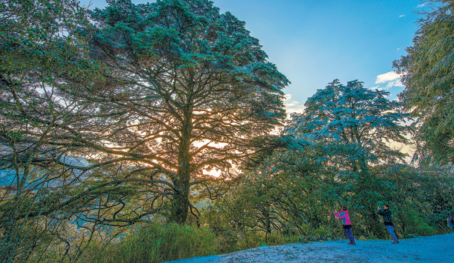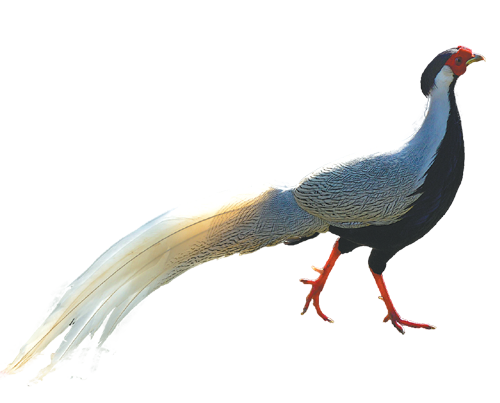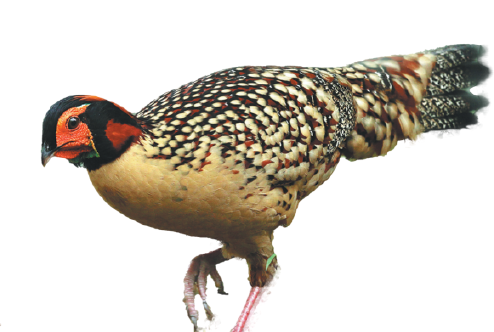An idea and idyll worth protecting
Rangers at Wuyishan national park keep the wildlife safe from the twin threats of fire and poachers, Yang Feiyue reports.

It was late December, and a winter chill was gripping Wuyishan, a county-level city of southeastern China's Fujian province. A two-hour drive from the downtown area through the depths of lush forest led to Xianfengling (Xianfeng Ridge) of Mount Wuyi, where an imposing fault zone cuts through a myriad of mountain trees.
"It's part of the fault belt that runs 1,200 kilometers from Jiangxi province all the way to Guangdong province," says Xu Zikun, head of a law enforcement team with the Wuyishan national park.
"The V-shaped zone was a result of collision and compression of the Pacific Plate and the Eurasian Plate... and we are in the northern and central part of it, where the strata are relatively stable," Xu adds, as if to assure the visitors of the area's safety.
Xianfengling sits 1,200 meters above sea level and at the hinterland of the forests, so the temperature is much lower than downtown, giving the air a sharper bite.
But its redeeming feature was the offer of a bird's-eye view of Mount Wuyi that has been a UNESCO World Heritage Site for its cultural, scenic and biodiversity values since 1999.
"The forest we see here, characterized by a mixture of pine and broad-leaved trees, is referred to as a mixed coniferous and broad-leaved forest," Xu explains.
After graduating from the Nanjing Forestry University in Jiangsu province in 2002, Xu came to the deep woods of Mount Wuyi and buried himself in ecological conservation work for the next two decades.
His social media practically serves as an exhibition hall for the flora and fauna of Mount Wuyi.
"Almost every inspection tour has led to new discoveries of species," Xu says.
A complex landscape, warm and humid climate, well-preserved vegetation and limited accessibility have all contributed to a sparse human presence and, thus, make for an ideal land for biodiversity.
"The biodiversity in our region is extremely rich, with approximately 3,000 species of higher plants and over 840 species of lower plants," Xu says.
That, in turn, gives rise to more than 7,000 species of animals, including insects and mammals, Xu says.
The place has been widely considered as a haven for birds, snakes and insects, he adds.
For those who want to ascend higher and get a better view, they can access a five-story observation tower via a steep flight of steel stairs.
"It was built in 1984 and initially served as a fire lookout tower," Xu says.
Later, a communication relay station was installed to enhance the fire-fighting capabilities in the area.
Additionally, a small-scale weather observation function was established to measure meteorological data, such as rainfall, temperature, humidity, wind speed and wind direction, within the region.
In recent years, with the development of the tourism industry, it has been opened to the public as a scenic viewpoint to meet the demands of visitors.
Chen Shuiwang, a local villager who has been hired as a rancher in the Xianfengling area, says he has felt a significant improvement in biodiversity over the past decade.
"I would see some of the birds only a few times, but now they seem pretty common," says Chen, who walks more than 6 km every day to ensure forest safety.
Tackling fire hazards and trespassers are a major part of his job.
About a 40-minute drive from Xianfengling, the Tongmuguan (Tongmu Pass) further tests travelers' threshold for coldness.
The pass separates Fujian and Jiangxi provinces. The water stored in buckets had a thick layer of ice, and the tap-water pipes were sometimes frozen stiff.
Li Hong, head of the pass, had to break the ice and run the taps before he stepped out for inspection.
Normally, the cold spell will last until mid-February.
Tongmuguan is one of the highest checkpoints in Fujian and plays a key role in crucial ecological protection tasks, such as forest fire prevention and resource conservation.
Li and several of his colleagues have to work in 24-hour shifts and often stand in the bitter cold.
Whenever vehicle horns blow, the personnel on duty take turns to man the checkpoint.
Facing the biting north wind, they signal the passing vehicles to stop for inspection and registration.
"We need to ascertain if they are carrying any contraband items, such as wood and wildlife," Li says, adding that they need to remove their gloves and touch the items with their bare hands to conduct a full inspection.
In addition to guarding the pass, Li and his colleagues also have to tour the surrounding forest.
"When encountering hikers entering restricted areas, we must immediately intervene and persuade them to turn back," Li says.
If hikers suffer from frostbite or injury, they also have to carry out first aid.
Although the work in the deep recesses of the mountain is arduous, Li says the best reward comes when he helps endangered animals.
According to local authorities, the natural reserve has had no fire or poaching incidents in the past four decades.
A 90-minute drive from Tongmuguan, in the direction of the downtown area, the Wuyishan national park's intelligent management center keeps track of the real-time entry and exit of tourists, the hydrological and atmospheric conditions, as well as the movement of patrol and protection personnel.
"This allows for dynamic supervision of resource protection, emergency management and environmental capacity warnings at the national park," says Fan Zhiwei, a staff member with the park.
The application of evolving technology has also made things easier for workers on the front line.
Forest rancher Zhang Quan says he now just has to put the coordinates of a specific location into his tablet computer and the real-time satellite images and historical satellite images of that area will be presented.
"Through comparison, we can identify whether there have been changes in the ecological environment, greatly enhancing our efficiency," Zhang says.
In 2023, the national park designed 4,970 patrol routes where patrols have cumulatively reached 33,830 km.
The park has also introduced drone patrols in key protected areas and unmanned zones that are difficult for personnel to reach.
This not only expands the scope of inspections, but also ensures the safety of patrol team members, the park's management says.
The technology-empowered protection has led to a steady improvement in the quality of the local ecological environment, which has attracted many bird-watching enthusiasts and biological researchers.
Wen Gengyin is still reminiscing on his trip to Xianfengling in May.
He took photos of many rare birds there.
"It was my second trip to Mount Wuyi," Wen says.
"I was impressed by the green mountains, clear waters and various birds and insects here during my first visit a few years ago," Wen says.
"Coming back to Mount Wuyi this year, the environment has improved, and I've captured many birds that are not commonly seen in the city, which is delightful," he adds.
For Xu Zikun, he still vividly remembers the first time he spotted a male Teinopalpus aureus in 2011, a rare species of butterfly that is a national first-class protected insect.
More than a decade has passed, and Xu says he increasingly sees such rare creatures at the national park.
"In recent years, two new species, Megophrys ombrophila (an amphibian) and Gastrodia fujianensis (a plant), have been found in Wuyishan, while the number of newly discovered insect species exceeded 1,000," Xu says.
"It's proof of (improvement of) Mount Wuyi's ecological conditions," he says, adding that the area has served as a rare genetic repository for species worldwide.





Today's Top News
- Xi taps China's deep wisdom for global good
- New rules aim for platforms' healthy growth
- Chinese web literature grows overseas
- Postgrad exam trend points to thoughtful approach
- World's highest urban wetland a global model
- How China's initiatives are paving a new path to a better world






























